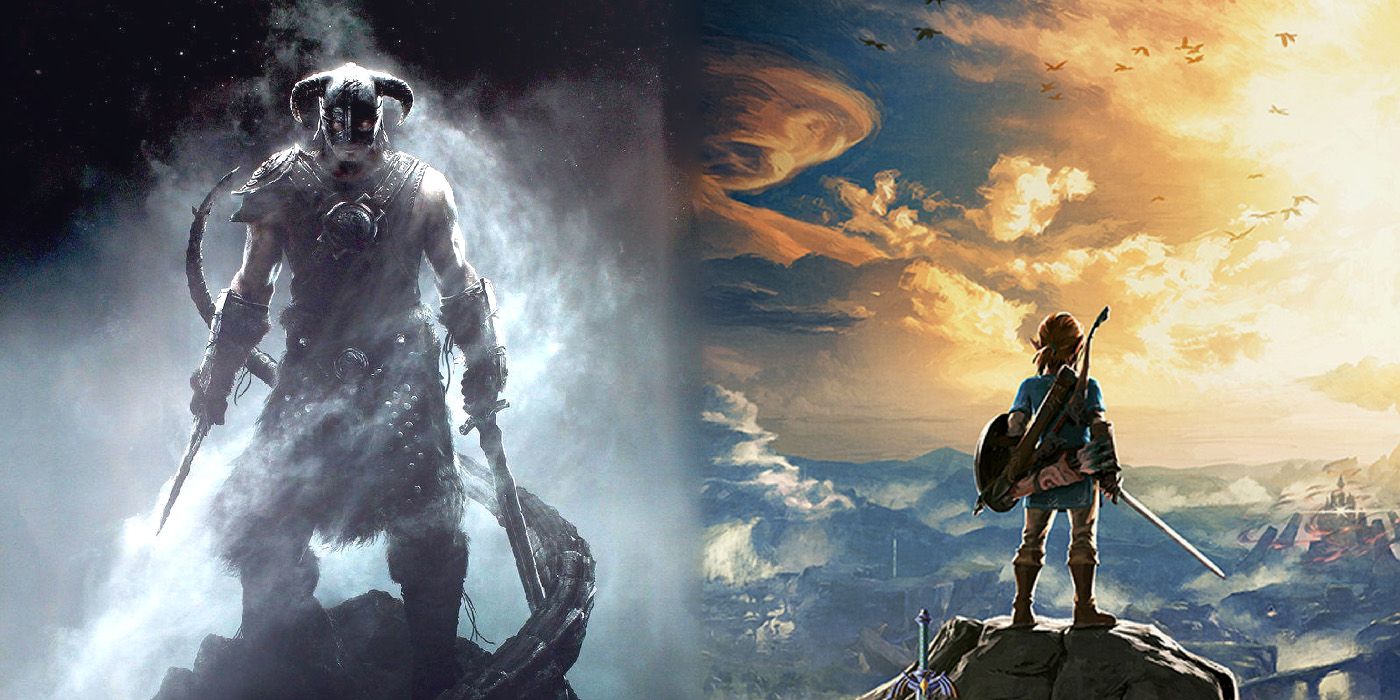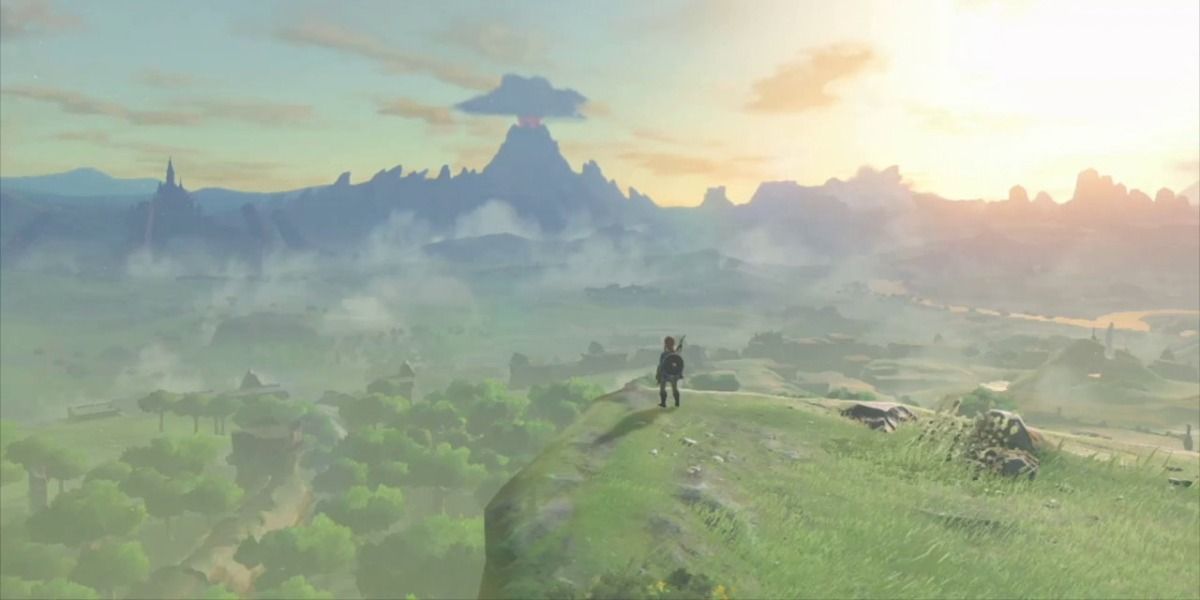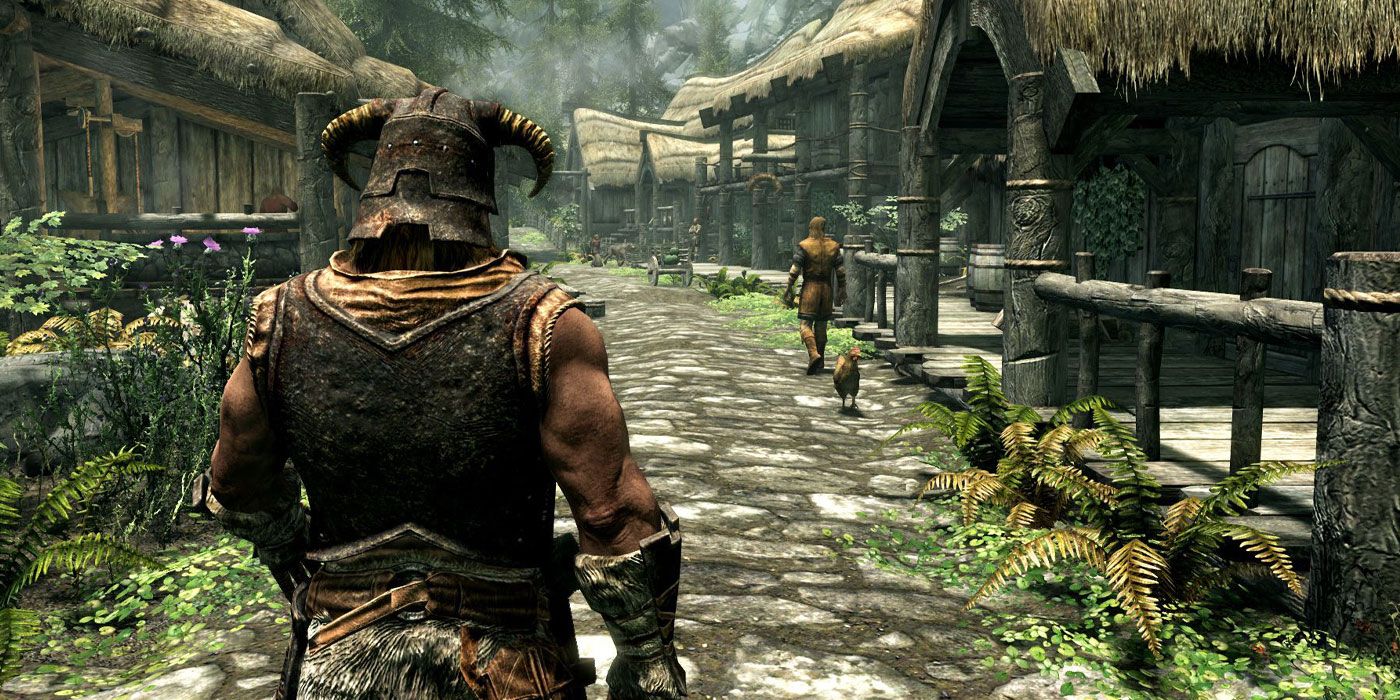The Elder Scrolls V: Skyrim took the world of gaming by storm when it released in 2011 and subsequently established what a successful open-world looked like. Following Skyrim, many more open-world games popped up, with several trying to replicate what it achieved. However, the 2017 release of open-world game The Legend of Zelda: Breath of the Wild immediately set a new standard.
Both are great open-world games in their own ways: Zelda has more of an adventure focus and Skyrim has an RPG focus. However, there are some overlapping aspects of the two games where Breath of the Wild is superior.
The purpose of an open-world, in theory, is to allow the player to do whatever they want and explore to their heart's content. However, in Skyrim traversing the map is more akin to traveling than exploring. To get to the next destination, players need to mark the location on the map and then follow a navigation bar, rather than discover the next point of interest through exploration. Players more often than not look at their HUD while they move, in the process missing all the little details of the intricately-designed world in a rush to reach the next location.
Breath of the Wild avoids this destination-focused traveling by designing the world to encourage discovery and appreciation of the journey. Instead of map locations being provided, players have to survey the area and decide on an interesting location to investigate. In fact, the game can even be completed with the HUD off, as there's always NPCs to give hints that aid in discovery without hand-holding, something even Skyrim's predecessor, Morrowind, did well despite releasing a decade earlier.
Instead of having a bland, realistic world like Skyrim, Breath of the Wild takes liberties and has absurd but interesting things peak out from the horizon or lie around in the middle of nowhere, nudging the players to investigate. In an odd way, Breath of the Wild even feels more immersive than the more grounded world of Skyrim because of small details: Wearing metal during a storm can lead to electrocution, walls are slippery to climb when it rains and cold terrains force Link to dress appropriately.
Another factor contributing to immersion lies in the way the two titles approach traversal. In Breath of the Wild, traversing the map is fun. There are options to climb, clide, ride a horse, or even ski on the shield. In Skyrim, traversal is tedious, especially when players don't have a horse.
With a greater focus on going from one quest point to another, players may frequently feel compelled to rely on the fast travel mechanism instead of immersing themselves in the open-world. Breath of the Wild also has fast travel, but players may feel more compelled to climb a mountain and glide from the top than to use the immersion-breaking feature.
Another plus of Breath of the Wild is the multiple solutions it offers for problems. Players can go over a river by cutting a tree to form a bridge, swimming through it, or climbing a mountain instead. They can defeat an enemy by rolling a boulder at them or by setting their camp on fire while they're asleep. It doesn't only offer player freedom for what to do -- like Skyrim -- but also how to do it. These elements create a wonderful and rich world that convinces the players to explore every corner of it and to also defend it from Ganon.
In stark contrast, Skyrim's world feels aesthetically bland and not something worth saving from Alduin. However, while Skyrim does feel like a grind during the in-between from one quest to another, the quests themselves are fantastic and something Breath of the Wild is underdeveloped in. While Skyrim's quests lead players into discovering engaging subplots or lore, Breath of the Wild is almost barren in this department. Many of its quests lead to uninspiring rewards, such s a Korok seed or a breakable new weapon. While both titles struggle in telling a main story worth playing, Skyrim's side stories are definitely some of the highlights of the game.
However, despite of this lack of NPC stories and world-building lore, it would be unfair to call Zelda's world empty in content. Sure there are lesser quests, NPCs and villages in comparison to Skyrim -- even though the former is larger -- but the the sheer size of the game in comparison to its content serves a different but very vital purpose, which is the sense of awe and adventure.
If the Breath of the Wild sequel can maintain that feeling while still providing more lore and side-stories for quests -- something its predecessor, Majora's Mask, did excellently -- it might even surpass Breath of the Wild. The Elder Scrolls VI, on the other hand, might benefit from relying less on the HUD elements and more on creating invisible directions within the design of its world. It seems both games have a little something they could learn from the other.



